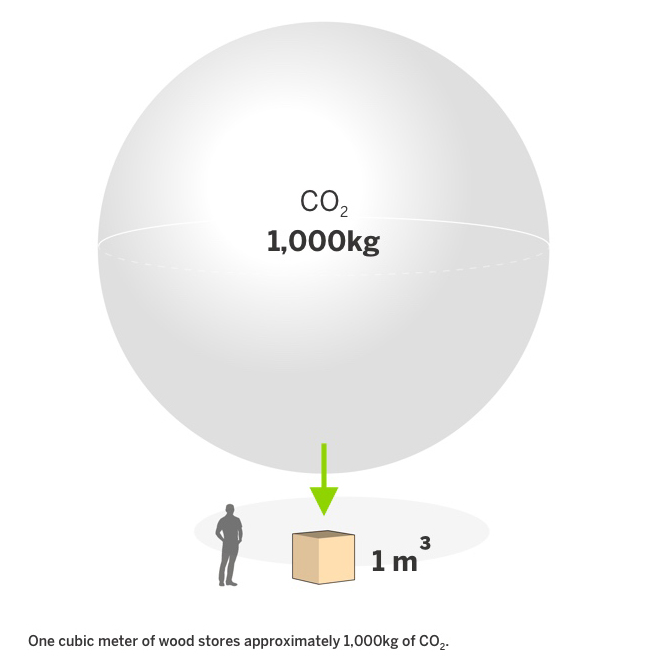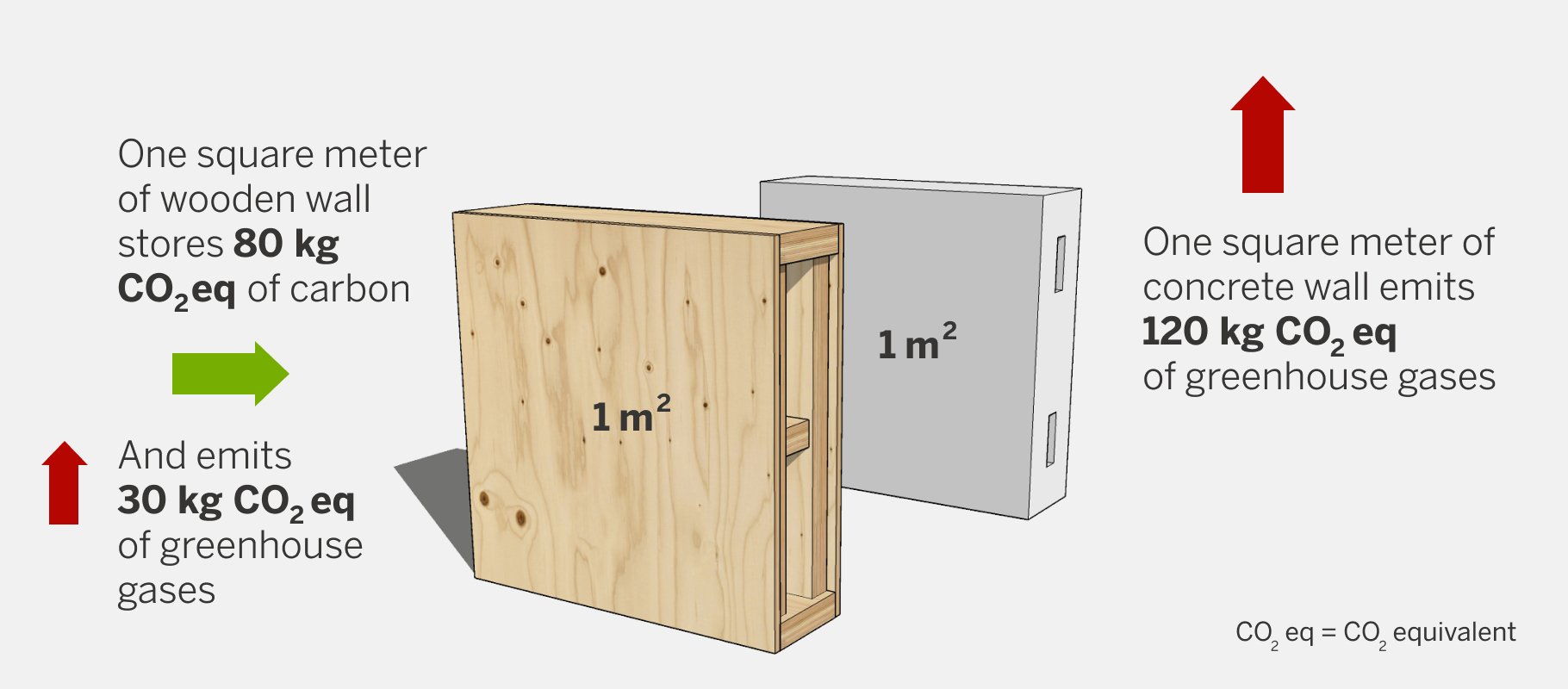A wood product is a climate act
Wood has the unique ability to absorb carbon dioxide from the atmosphere and store it. To grow, one kilogram of wood needs approximately 1.55 kilograms of carbon dioxide, and the carbon from this is stored in the wood. The rule of the thumb is that one cubic metre of wood stores a tonne of carbon dioxide.
“Being renewable and recyclable, wood is the best construction material from the climate perspective, because it stores carbon within it,” says Jussi Björman, Director, Business Development, Construction, of Metsä Wood.
Wood’s ability to store carbon will therefore not disappear when a tree is felled. Processed wood will function as a carbon storage for as long as the product made from the wood exists. “A building constructed of wood will function as a carbon storage throughout its life-cycle,” adds Björman.
An average Finnish single-family house built from wood stores roughly 30 tonnes of atmospheric carbon dioxide within its wooden structures. This is equal to the carbon dioxide emissions generated by the average miles driven by one consumer over a period of 10 years.
Wood provides better urban construction
The benefits of wood construction – in other words the lightness of the material, fast construction and environmental friendliness – provide innovative and sustainable opportunities for modern construction, particularly in growing urban environments, where the need for housing is increasing at the same time as good building sites are growing increasingly scarce.
At the moment, wood accounts for approximately 5 per cent of construction in Europe. “The use of wood should be increased particularly in cities, because wood construction can reduce the carbon footprint of urban environments to a substantial degree,” says Björman.
“If the share of wood in urban construction increased, it would have an enormous climate impact – and there would still be no need at all to compromise on the quality of construction. The same structures that are made from concrete or steel could just as well be made more ecologically from renewable and sustainably grown wood,” adds Björman.











